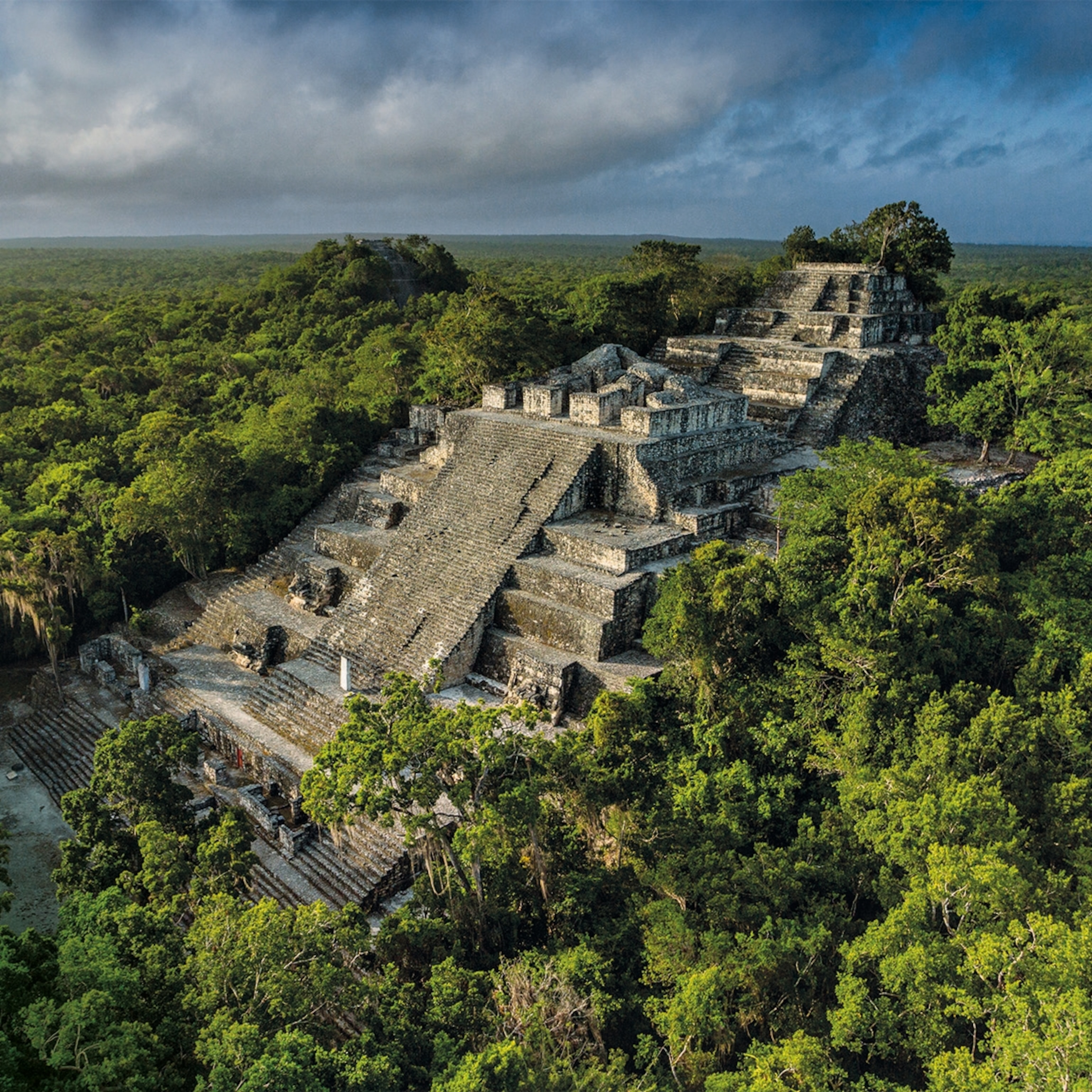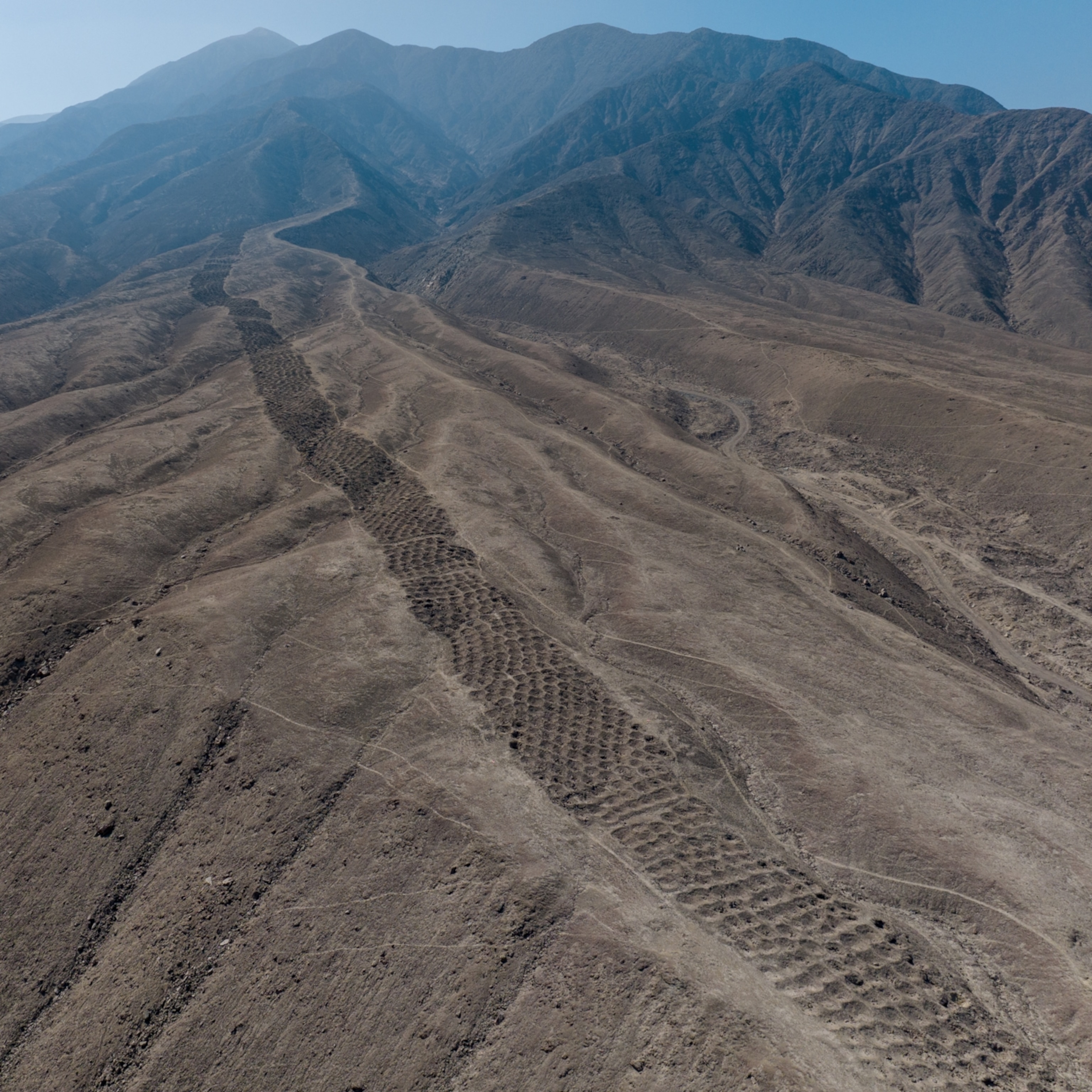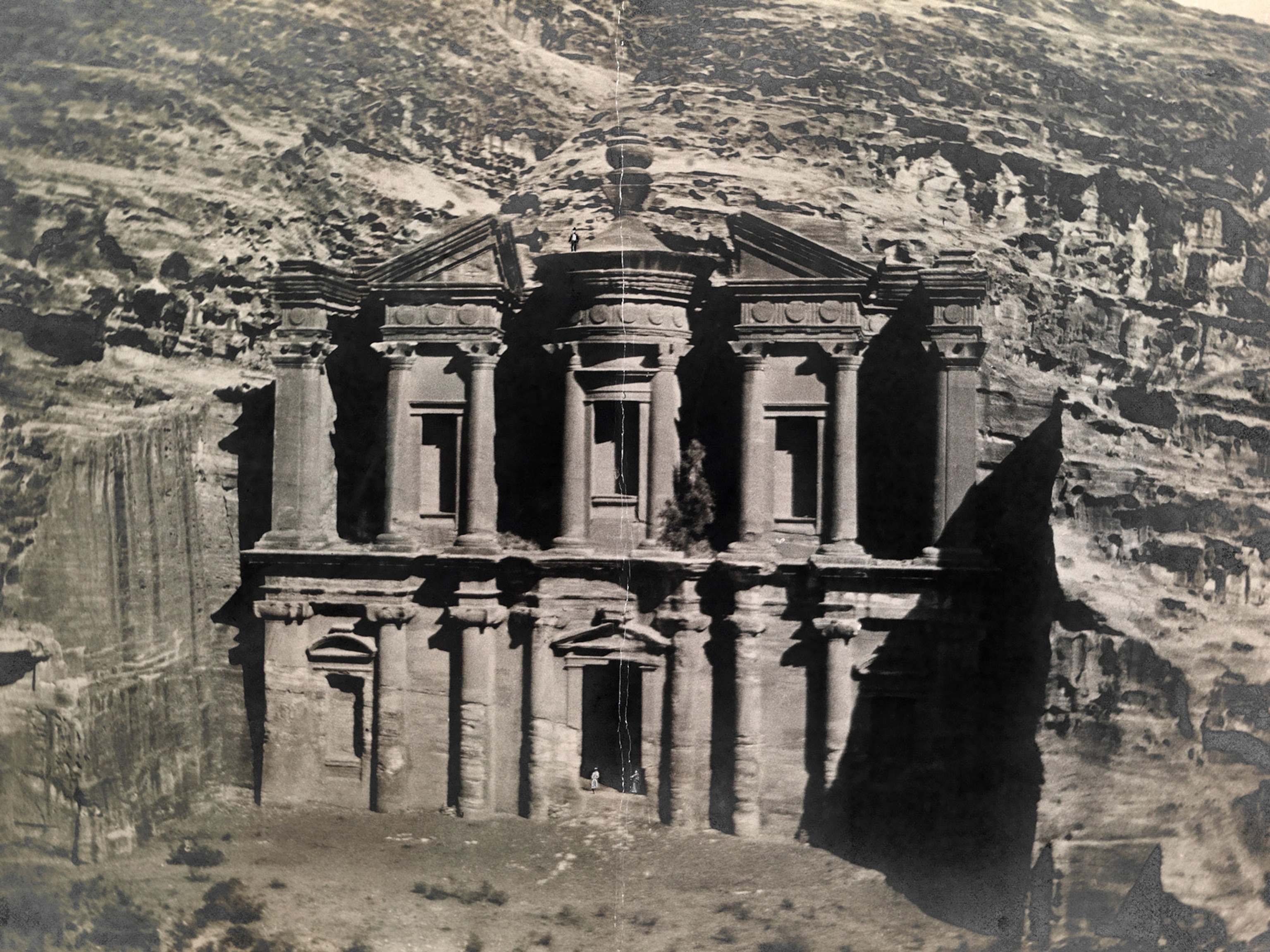Who were the Aztec, really? It’s complicated.
Before their defeat by the Spanish in 1521, the triple alliance ruled Mesoamerica through complex trade networks—and warfare.

Following the fall of Tenochtitlan, an Aztec poet composed a searing account of the capture of the capital city. Written in the Nahuatl language, using the Latin alphabet of the Spanish invaders, it is the earliest native account of the sufferings of the Aztec people and their defeat 500 years ago in 1521: Our inheritance, our city, is lost and dead. The shields of our warriors could not save it. We have chewed dry twigs and salt grasses; we have eaten lizards, rats and worms…
Today what remains of Tenochtitlan lies underneath Mexico’s thriving capital, Mexico City, one of the most populous cities in the world. Surrounded by modern architecture, the archaeological site of Templo Mayor is revealing more and more about the Aztec city and its inhabitants—a reminder of the people and culture who were subdued and absorbed by the colony of New Spain.
Many European chroniclers focused attention on the conquistador Hernán Cortés, but renewed focus on the events of 1521 is placing more attention on the Aztec themselves. What has unfolded is a compelling, complex story of how an alliance among Mesoamerican city-states quickly rose to power, only to lose it.
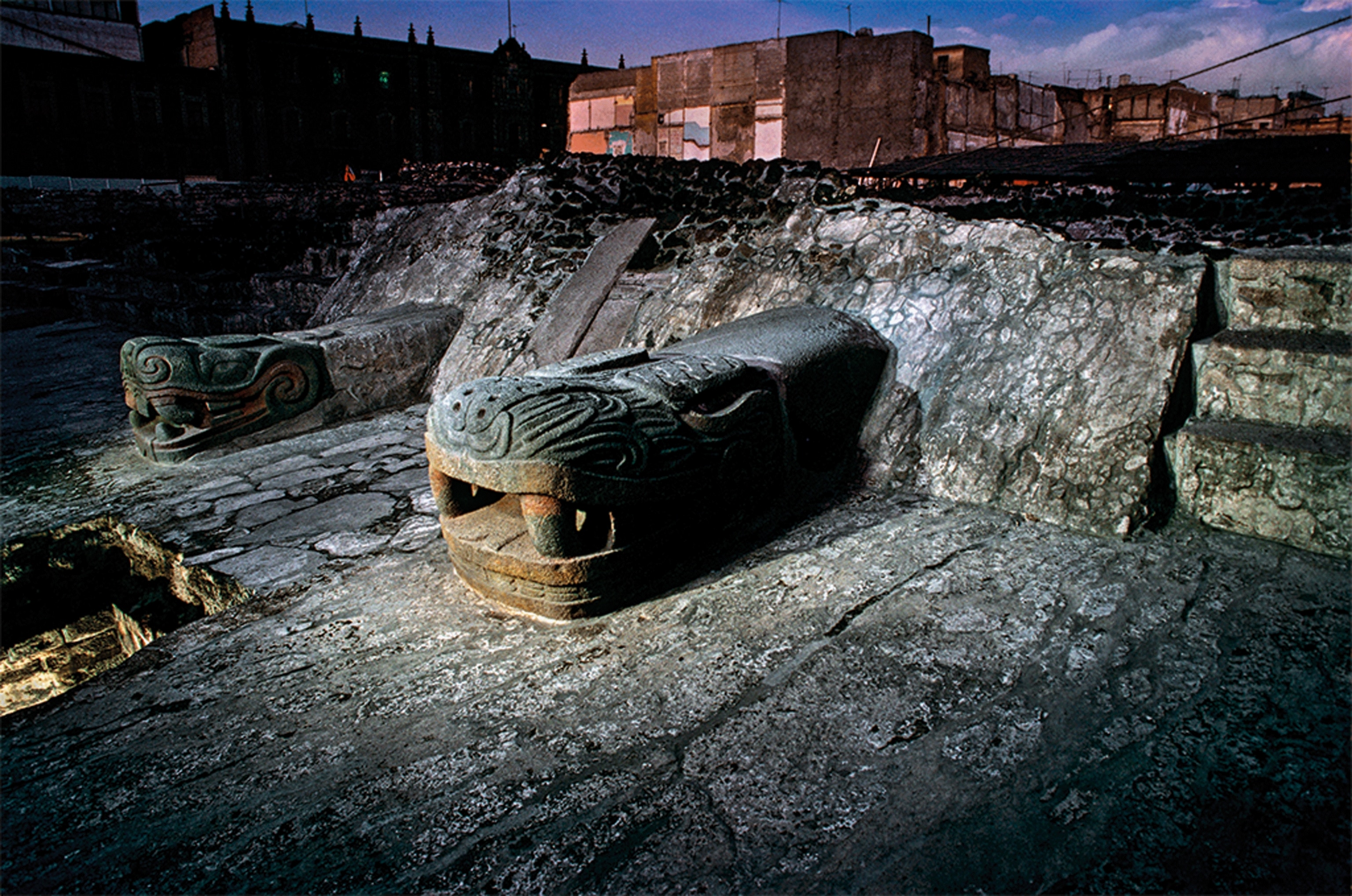
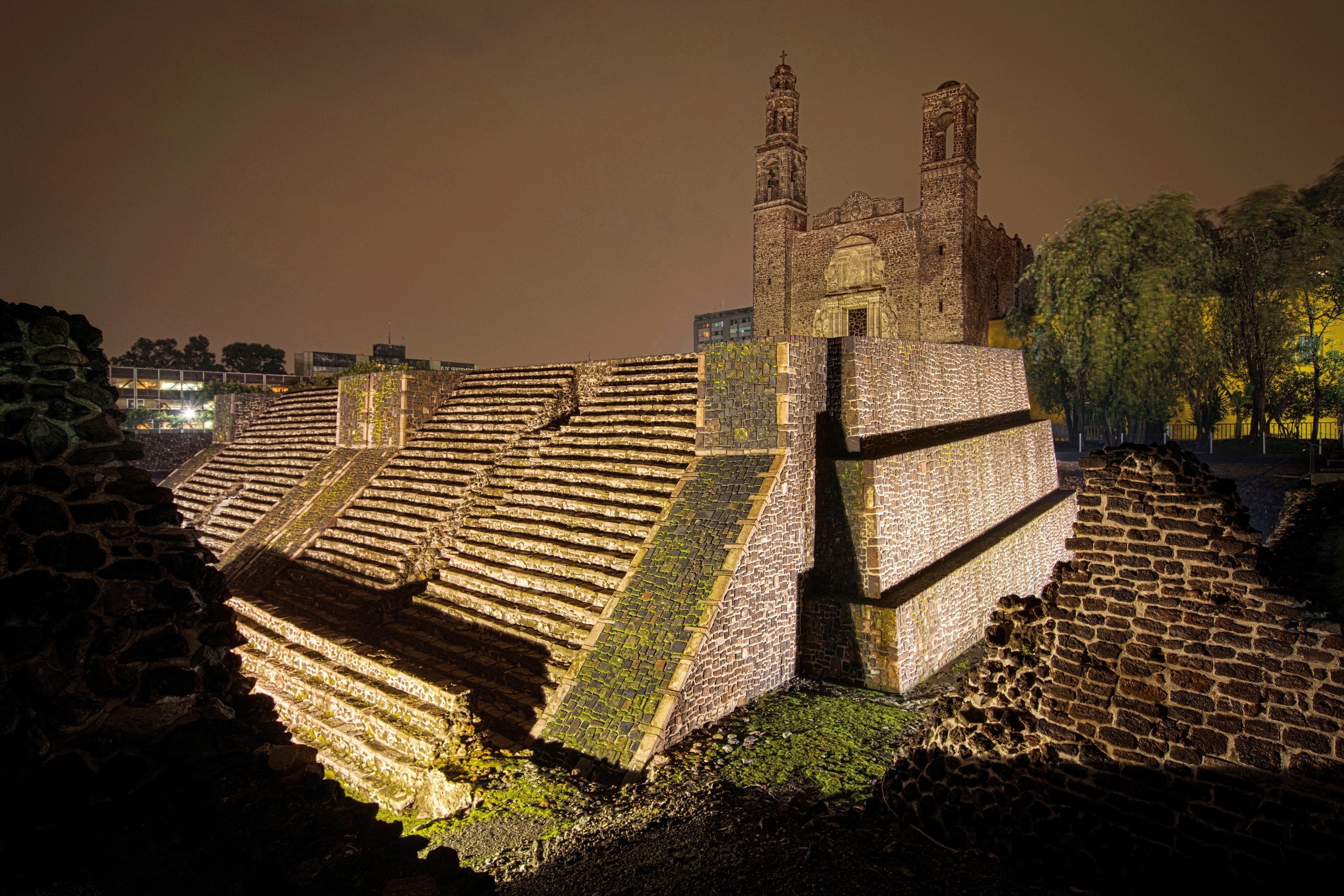
Colorful chronicles
The name Aztec was first coined by an outsider—the Aztec called themselves the Mexica (also Culhua-Mexica). In the early 1800s, German scientist and explorer Alexander von Humboldt coined the term for the people of Tenochtitlan based on the word “Aztlán,” the traditional name of the Mexica’s ancestral homeland. Archaeologists have not been able to identify the exact location of Aztlán, but most place it in northern Mexico.
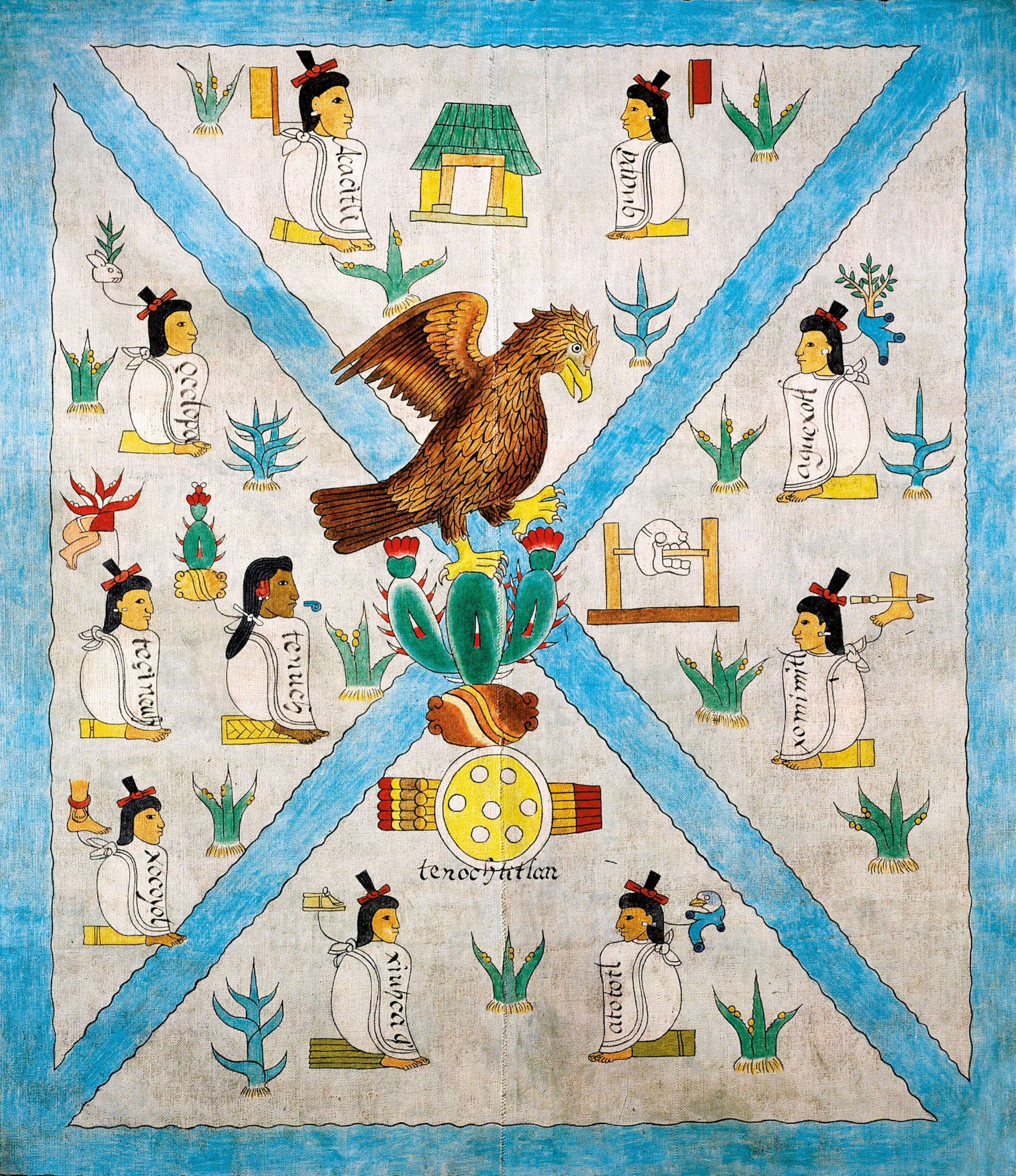
Much of what is understood about Mesoamerica during the time of the Aztec comes from either sources written by the Mexica themselves or by the Spanish after 1519. The region was rich with other cultures and city-states, but more is specifically known about Aztec culture because of these plentiful sources. The Mexica portray themselves in their records as a people predestined for power, who, after overcoming numerous obstacles, eventually control a wide-ranging empire.
These accounts were created by the Mexica in recorded histories known as codices. They took note of their ancestors, their deeds, their faith, and their practices in these documents.
Many were destroyed during the Spanish invasion, but five survived. These were pillaged by the Spanish and sent to Europe, where they are now held in several museums.
Production of such works resumed after Tenochtitlan’s fall. Some were commissioned by Spanish colonists as a means to better understand and control the Mesoamerican peoples. One of the most famous is the Mendoza Codex, which was created in 1542 for Charles V, King of Spain and Holy Roman Emperor. The document features Aztec glyphs accompanied by texts written in Spanish, allowing for translation. The first part of the codex lists a series of wars or conquests grouped by each Aztec leader. The second part lists the tributes received.
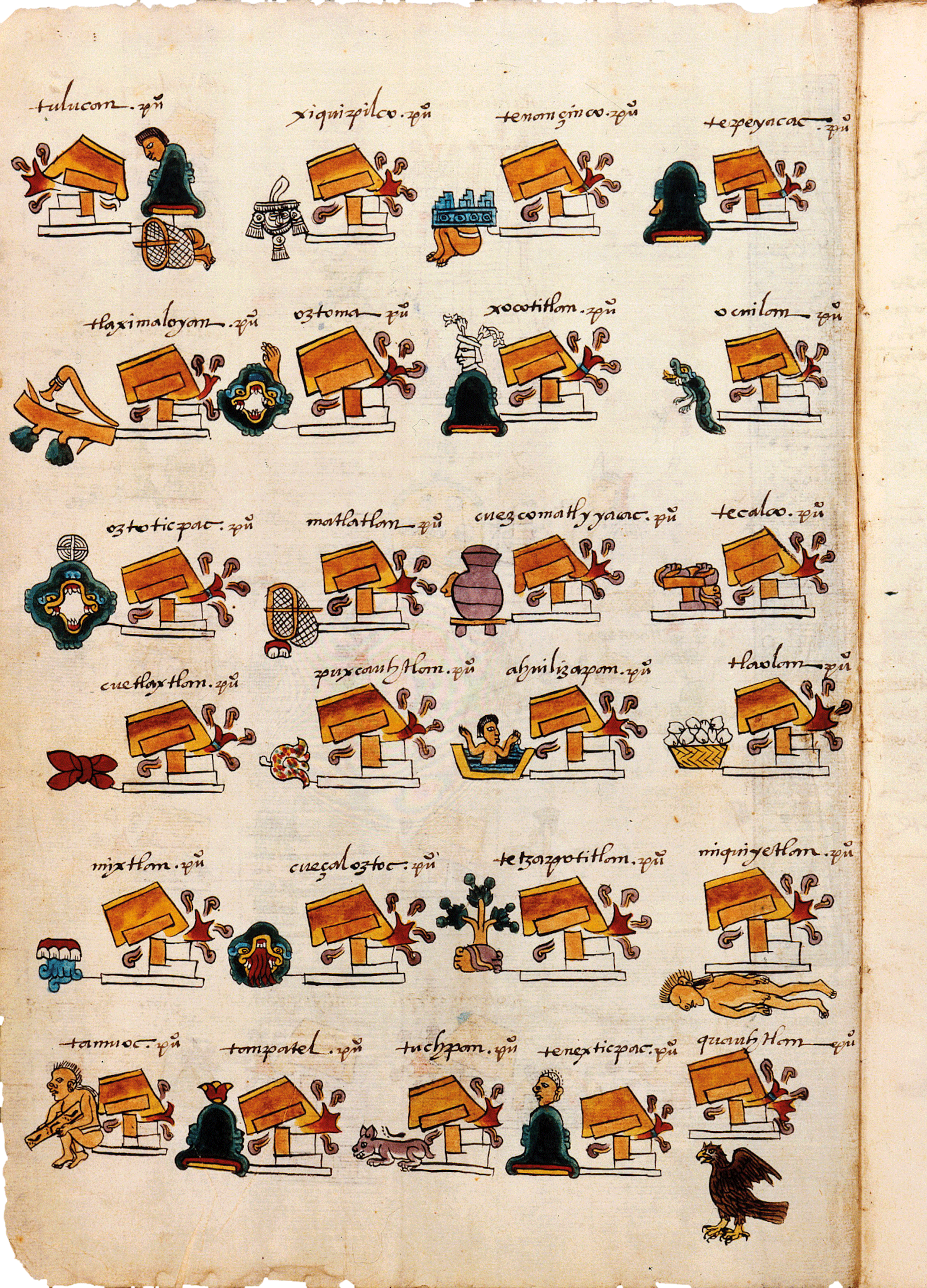
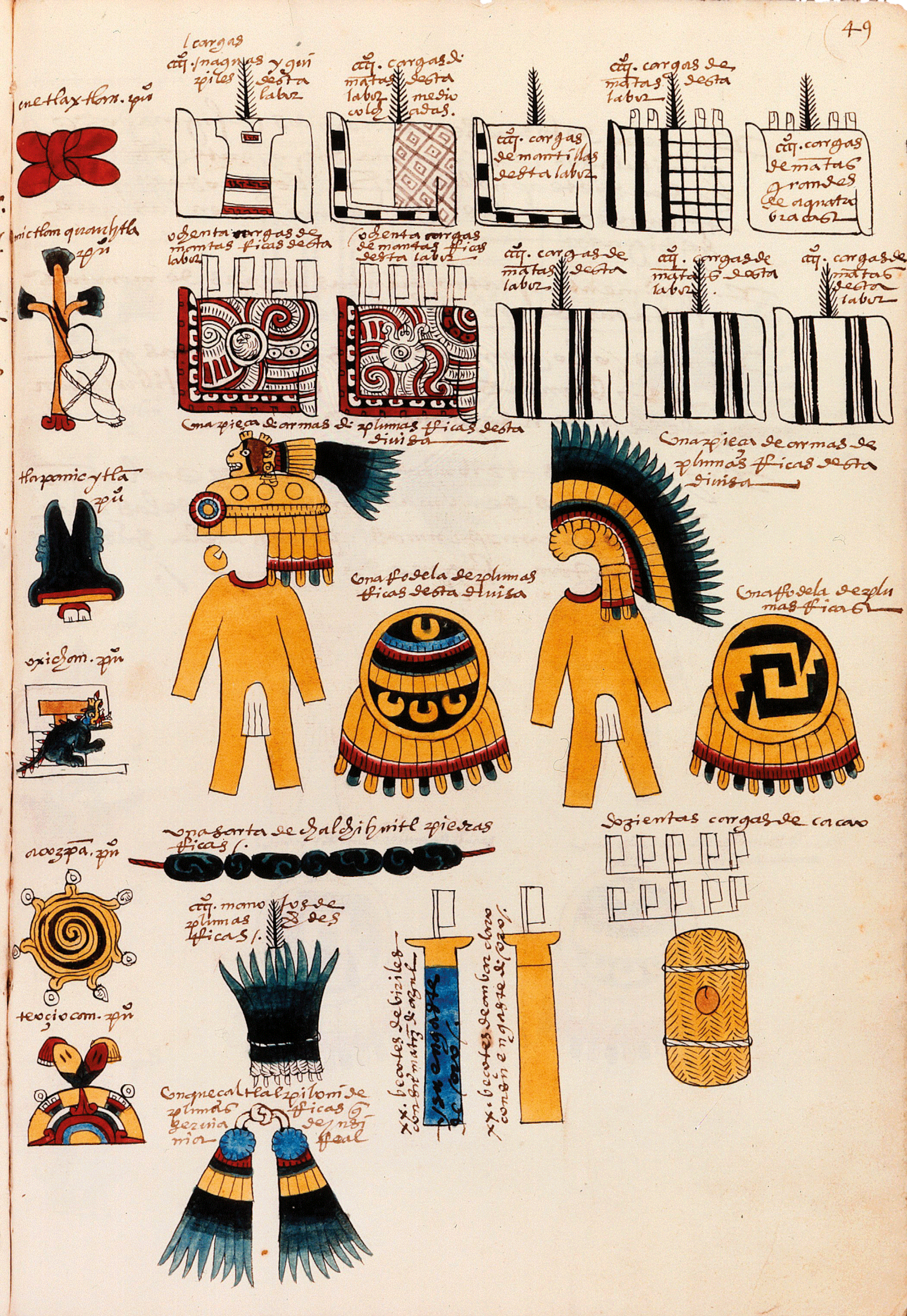
In addition to tributes, the Aztec state enriched itself through trade. Much of what historians know about the Triple Alliance is drawn from the tributary codices of Tenochtitlan.
Although the picture is incomplete—no record of this type has been found concerning Texcoco and Tlacopan—the sources provide a fascinating window into how the huge population (between 150,000 and 300,000) of Tenochtitlan was provisioned. Food, raw materials, and fabrics came from areas close to the city, while luxuries such as gold, sweet gum resin, cocoa, and precious feathers came from distant corners of the sprawling empire.
Centers of power
The people of Aztlán were originally nomadic and had migrated to several locations before settling on the islands of Lake Texcoco, in the Valley of Mexico, which was controlled by the nearby city of Azcapotzalco. The Mexica served as mercenaries and built a reputation for ferocity in combat. They spoke Nahuatl, the same tongue of the mighty Toltec civilization who dominated the region between the 10th and 12th centuries, and sought to connect to their illustrious ancestors.
Around 1325, the Mexica founded Tenochtitlan and made it their capital. Although the new city prospered, along with other cities, including Texcoco, it remained subject to Azcapotzalco until the lord of Azcapotzalco died in the early 15th century. As disputes arose over his successor, the dominion of Azcapotzalco ended. In 1428 a new power emerged, formed by the cities of Tenochtitlan, Texcoco, and Tlacopan. It was called the Triple Alliance.
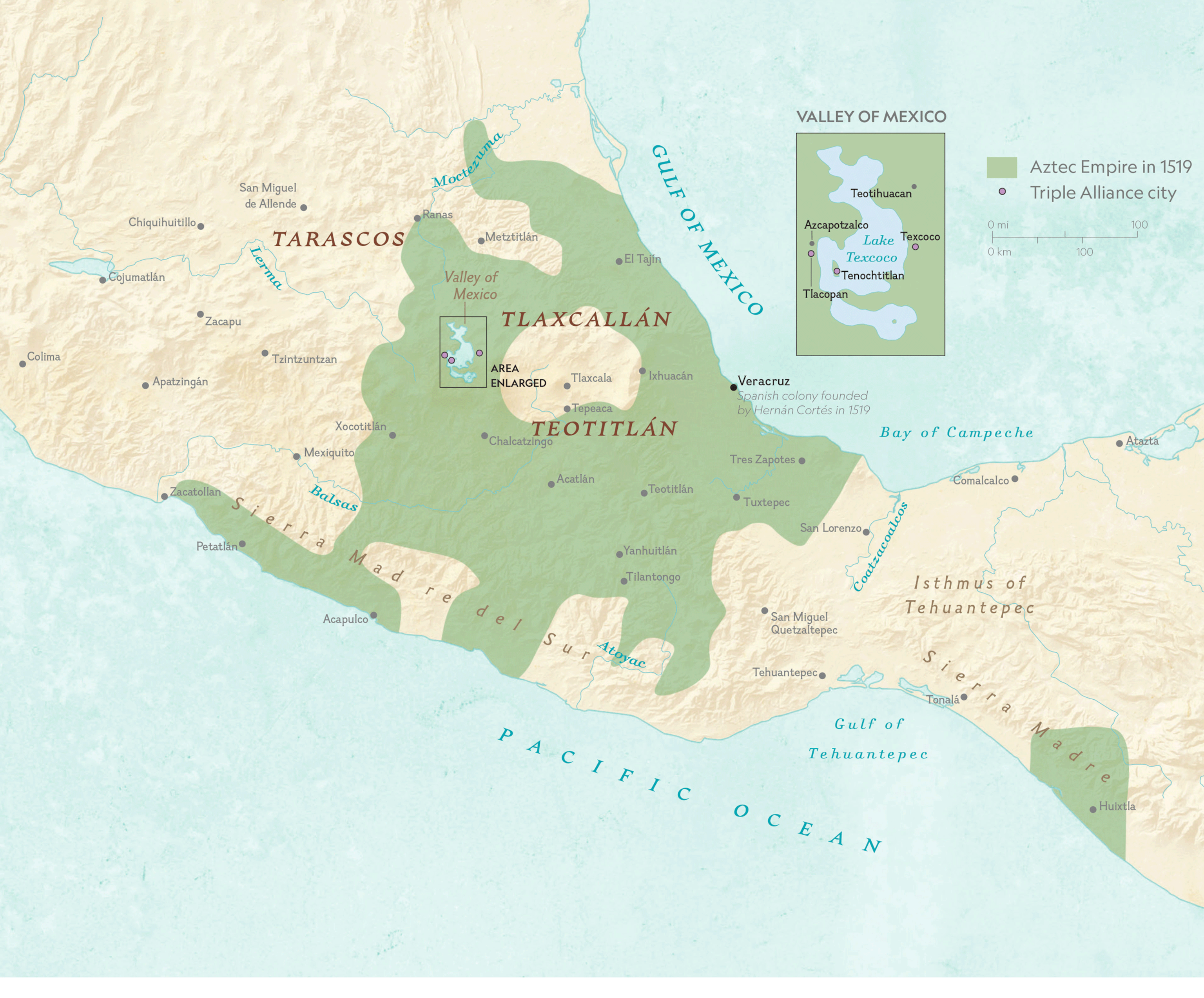
At first, Texcoco and Tenochtitlan occupied the top of the hierarchy, with Tlacopan subordinate to both of them. Over time, Tenochtitlan became the most powerful, and its ruler Motecuhzoma Xocoyotzin (Moctezuma II) was the most powerful member of the federation in the 1500s when the Spanish arrived. They observed that Moctezuma’s people were the most powerful of the Triple Alliance and put forth the idea of an empire centered around the Mexica, one which later became widely known as the Aztec Empire.
(Rare Aztec map reveals a glimpse of life in 1500s Mexico.)
In the early 1400s, the Triple Alliance took control of Azcapotzalco and other subject peoples. Some willingly accepted this transition of power, but others had to be convinced by force. There was no major expansion of territory until a great famine occurred in the Valley of Mexico between 1450 and 1454. The alliance needed more land for food production and began conquests of city-states.
This process accelerated under Axayacatl, the tlatoani (ruler) of Tenochtitlan, the de facto ruler of the alliance. Although often translated as “king” or “emperor,” the role of tlatoani was less absolute in nature and required multifaceted leadership. He actively intervened in the army, state religion, and governing, as a kind of commander in chief and head priest rolled into one.

Other powerful city-states remained independent from, though not necessarily hostile to, Tenochtitlan’s domination. Tlaxcala, which lay fairly close to Tenochtitlan, was a major center of active resistance. Historians are divided as to whether the Tlaxcallán people remained independent through military strength or convenience: Mexica sources justified leaving it alone because it left a nearby state available for important ritual warfare contests known as the “flower wars,” in which inconclusive battles provided a source of prisoners to sacrifice to the gods. The fact that the Tlaxcallán allied with the Spanish against Tenochtitlan, however, seems to contradict that account. In 1521 the city-state became Hernán Cortés’ local ally in his campaign against Moctezuma.
Building an empire
In 1481 Axayacatl was succeeded as tlatoani by his brother Tizoc, whose reign is celebrated on the huge sacrificial Stone of Tizoc. Carved reliefs show him subduing 15 cities. His short reign saw revolts against his regime, and gained limited territory. Even so, power was still dramatically proclaimed through such impressive monuments.
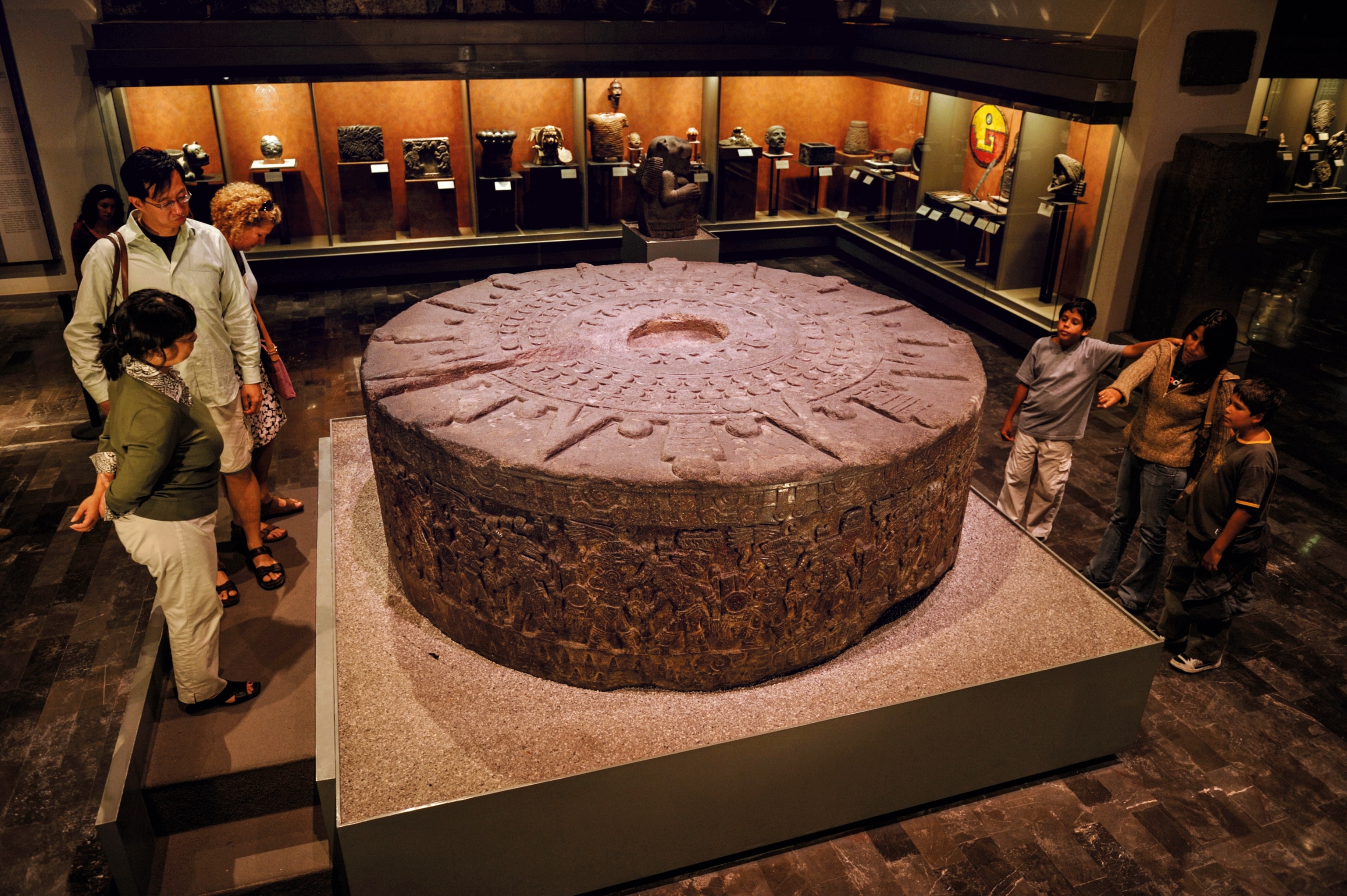
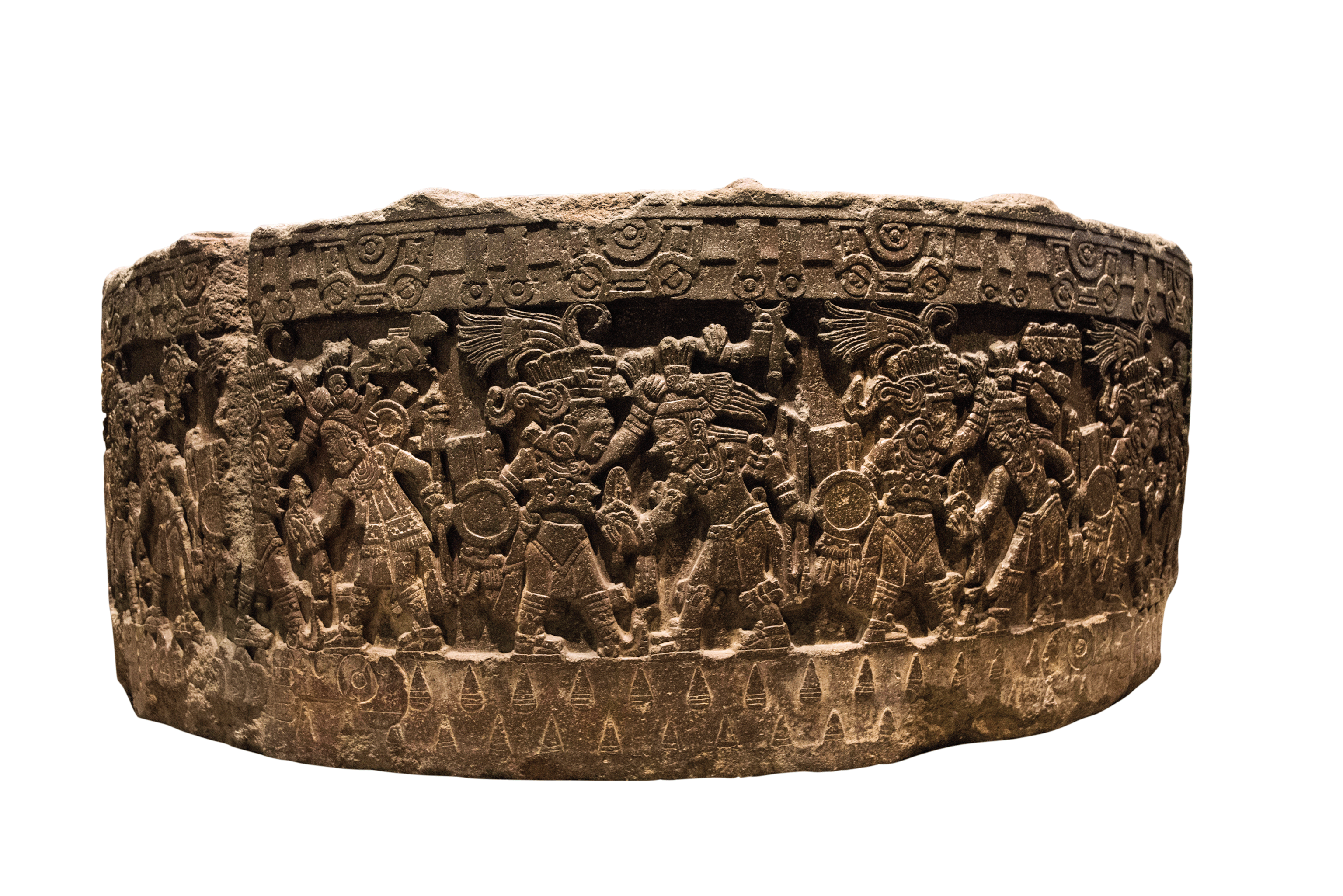
Ahuitzotl, probably the greatest of all the Aztec rulers, came to power next. He expanded the empire’s borders as far as present-day Guatemala, coming into contact with Maya lands. When Ahuitzotl died in 1502, Moctezuma II became tlatoani and expanded the alliance’s influence significantly into the Zapotec areas toward the Pacific. He was still ruling when Cortés made his fateful landing and founded the colony of Veracruz on April 22, 1519.
(After Cortés conquered the Aztecs, his ships were lost at sea. But a new clue has surfaced.)
War was not the only means by which the alliance expanded. City-states and their lands could be gained through diplomacy and inheritance. The death of a lord of a dominion within the alliance’s territory was an opportunity. A tense succession process would often follow. If a candidate resisted the alliance’s power, he could be replaced by a close relative more amenable to the Mexica. Putting him in control of a local territory allowed the Aztec to accumulate more power.
This system led to the creation of complex power networks within the alliance: One local lord might be subject to the overlord of Tenochtitlan, while others might be subject to those of Texcoco or Tlacopan. Despite these complexities, the Triple Alliance was able to grow quickly over the course of a few decades; however, it was these kinds of struggles that contributed to Tenochtitlan’s downfall.

Problems arose when several candidates had the same relationship with the overlord and he had to choose among them. This happened shortly before the arrival of Cortés, when Nezahualpilli, lord of the second most important city of the Texcoco empire, died. Three potential successors all had mothers who belonged to the aristocracy of Tenochtitlan. Moctezuma, therefore, had to reject two factions and risk alienating them, which is exactly what happened. One of the rejected candidates, Ixtlilxochitl, later formed an alliance with the Spanish.
Alienation and local rivalries were factors in the fall of Tenochtitlan. In the face of the invading Spanish, the city-states of Mesoamerica chose different paths to survival. Some, like Tlaxcala, chose to ally with Spain, while others, like the Mexica, chose to fight. As the world revisits the events of 1521, much remains to be explored about the story of the Mexica and their fate when Spain came to the Americas.

